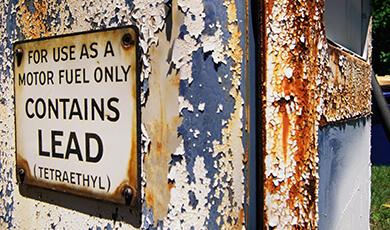Reducing harms after Nuclear, Radiological and Chemical Incidents
Share
- Details
- Text
- Audio
- Downloads
- Extra Reading
Nuclear, radiological and chemical incidents have the potential to cause major harm.
The risk of nuclear and radiological events causing health effects can usually be significantly reduced by relatively simple measures, which are based on the properties of the chemicals released, especially at a distance from the incident.
Chemicals that can cause harm, such as organophosphate and mustard chemicals, need to be understood to mitigate the risks and establish medical countermeasures.
Download Text
Reducing harms after radiological, nuclear, and chemical emergencies
Professor Christopher Whitty
28 November 2023
This lecture considers the health effects of radiological, nuclear, and chemical incidents and how to minimise them. Broadly a nuclear incident is a blast or explosion caused by nuclear fission with subsequent contamination. A radiological incident is radiation but without a nuclear blast. Chemical incidents can be deliberate for example chemical warfare or poisoning, or accidental such as chemical leaks. Central to all of these is an old saying attributed to Paracelsus in the 16th century that “the dose makes the poison”. Our bodies are capable of handling small amounts of radiation and many toxic chemicals and recovering from moderate doses. Only at high doses does significant long-term harm tend to occur, and at very high doses deaths. Minimising the dose is therefore the key to minimising harm. These notes are not a verbatim transcript but rather an indication of the areas that are covered during the lecture. All the information in the talk is open source.
Radiological and nuclear incidents and poisonings with chemical warfare agents cause understandable concerns. They can be dramatic and frightening (and are often dramatized in films books and other media). This talk will concentrate in particular on radiological incidents since these have happened several times, usually at small scale, but in the last sections will consider some important aspects of deliberate nuclear explosions (nuclear weapons) and common chemical warfare agents.
Radiological (mainly civil nuclear) incidents and accidents
Major radiological incidents are rare, but they have occurred several times. Two major events, the Fukushima 2011 and Chernobyl 1986 incidents are the largest and the most heavily studied. Several smaller scale incidents have however occurred including from power stations, medical sources, industrial sources, and submarines. Earlier incidents include the Three Mile Island event in 1979 in the USA and the Windscale fire of 1957 in the UK.
In considering radiological incidents it is important to put them in context. Most conventional power generation causes significant air pollution, and this can cause continuous, substantial, and predictable harm to humans. Air pollution from coal power generation in particular has been highly damaging to the health of large numbers of people including heart disease, stroke and lung cancer. The relative risks of nuclear power have to be seen in this context from a public health point of view. The reason for this talk is that radiological damage to health can occur; most of the alternatives also have significant health downsides, however. I spoke about air pollution in Gresham College on a previous occasion.
Radiological accidents usually arise from human error or natural disaster (or both). Chernobyl in 1986 as the best known, best studied, and largest. For details of the accident itself, which largely arose out of poor design and human error, the International Atomic Energy Authority report is the definitive version. The Fukushima nuclear accident of 2011 was triggered by an earthquake followed by a tsunami. I will consider these two accidents in this lecture.
After a radiological accident there are four broad potential causes of mortality and significant illness. These depend on the amount of radiation people are exposed to. Rapid effects occur only in those in very close proximity, generally radiation and emergency workers. These can be physical trauma due to explosions (generally not nuclear explosions) and acute radiation sickness which we will consider more fully below. Other than those actually on the site the two major risks are a potential increase in the risk of cancer in those under a radiological plume, and more importantly in terms of numbers, psychological effects.
To understand the risks after a radiological accident we need to understand the basics of radiation. Three forms of radiation in particular are relevant. Alpha particles can travel a few centimetres in air, and can be stopped by minimal barriers such as paper or dead surface skin. Beta particles can travel tens of centimetres in the air and are stopped by glass, aluminium or other relatively minor barriers. Finally gamma rays can travel up to some kilometres in air although their energy is reduced (attenuated) over distance; they are significantly reduced by, but not stopped by, walls of brick, stone or concrete and heavily attenuated by dense materials such as lead.
Returning to the principle that the dose makes the poison, the body can easily handle small amounts of radiation, and recover from moderate doses. We are all exposed to background radiation every day including from buildings, food and other sources. In medicine higher amounts are used for diagnostic x-rays and other than unborn foetuses these increase the health risks for humans minimally. At moderate doses of radiation radiotherapy is used to treat cancer based on the fact that the great majority of healthy cells will recover from a radiation dose. Radiation is concentrated in particular areas so that only the areas of the cancer have a dose high enough to kill the cells; the other areas of the body the radiation passes through have lower doses and the cells will generally recover. I have covered this in a previous Gresham College series on cancers. What is true in medical treatment is true also in radiological accidents.
For those exposed to very serious doses of radiation for significant periods the immediate risk is acute radiation sickness (ARS). This is only likely for those who are very near the radiation source and therefore usually in small numbers of people for example civil emergency response teams. The biological impact tends to occur in rapidly dividing cells. There are four sub- syndromes of ARS which may be seen in isolation or some combination. The first is haemopoietic; blood and especially white cell generation drops away for a period of time, which has a number of risks including of significant infection. The second is gastrointestinal. The third is cutaneous with the skin being affected on a temporary basis. Finally there is neurovascular damage mainly with very high doses.
In those with acute radiation sickness it tends to occur in four stages; the greater the radiation dose the faster and more severe these are and the greater the number of effects. Initially there is a prodrome of vomiting, headache, loss of appetite, diarrhoea and fever. It is temporary. There is then a latent period which may be between days and weeks in which people with a mild dose make a full recovery but those with a moderate or high dose of radiation make an apparent recovery before they become ill again. Depending on dose this can be between days and weeks. There was then a period of manifest illness lasting weeks to months including infection, diarrhoea and anaemia. Finally except in those with the most heavy irradiation there is recovery. To give some sense of scale, in Chernobyl probably around 134 people all close to the reactors suffered from acute radiation sickness and there were 28 deaths. In Fukushima no acute radiation sickness deaths were recorded.
Outside the immediate area of the accident acute radiation sickness is exceptionally unlikely. The risk is of a plume of radioactive material which is carried on the wind. For those who are not underneath the plume the risks are for practical purposes zero. Initially the plume may be quite concentrated but will predictably follow wind directions (which may be different at different heights). As time goes by the plume may get geographically larger as it disperses but also significantly less concentrated.
In those who are exposed to the plume and no countermeasures there may be an increased risk of solid tumours, leukaemias and other blood tumours, and particularly thyroid cancer in later life. It is however important to put these in context and for the great majority of these proportional increase on lifetime risk is very small even for those directly under a plume. Children exposed to radiation have a slightly higher lifetime risk than adults.
The largest lifetime attributable risk is of thyroid cancer. This is greater in females than males. For context thyroid cancer is extremely rare and the great majority (over 80%) who develop thorough cancer survive and remain well at 10 years after diagnosis but it is the cancer which may require specific countermeasures following a civil nuclear accident.
Thirty years after Chernobyl the World Health Organisation (WHO) estimated at most a modest increase of cancers other than thyroid cancer, and some increase in cardiovascular risks and cataracts occurred in those most exposed to the radioactive plume. All were dose-related. By far the most common harm was to mental health probably due to concern.
Since the dose makes the poison, with radiation exposure the key thing is to minimise exposure. This can be done by three approaches which complement one another: time, distance, shielding. Assuming a fixed concentration risk is proportional to time exposed. The shorter the period of time of exposure to radiation, or the smaller the dose, the smaller the risk. At a distance of a few kilometres from a radiation source alpha and beta radiation have no effect and gamma radiation is going to have a minimal effect. Keeping a distance from radiation is therefore highly effective at reducing the probability of a harmful dose. Shielding is highly effective against alpha and beta radiation which can penetrate only very short distances through any material, and significantly reduce the risk of gamma radiation provide the barrier between source and person is large (dense) enough.
Maintaining distance from a plume is significantly helped by modelling and there are several expert groups including in the UK (e.g. the Met Office). There are several variables which determine where a plume goes including how high radioactive material goes into the atmosphere, wind speed and direction, rainfall and other meteorological factors, and ground topology.
Not being under the radioactive plume is always the best way to minimise risk. For those who are unavoidably under the plume buildings provide very significant protection at least for the initial 1 to 3 days. They provide complete protection from alpha and beta radiation unless radioactive dust gets inside, and substantially reduce gamma radiation in particular of there are many walls between the outside and the person. It is important to close windows and switch of air conditioning. Cars are much less protective and usually it is initially safer for people under a plume to stay inside than to drive out of the area. The plume may not go where you think it will, and other people will have had the same idea so traffic may be slow (and hence exposure prolonged).
Decontamination after radiological or nuclear emergency is relatively straightforward. You have time; minutes do not matter. If you have been outside removal outer clothes and ideally all clothes and double bag them. Shower using soap and conditioner. This will usually remove more than 90% of radiation on you. The dose makes the poison.
The Chernobyl accident provides a model for which isotopes matter. Outside the immediate area radioactive iodine and caesium provide more than 90% of the radioactive material in the plume. Iodine-131 has a half-life of eight days so will decay away in months and be significantly less harmful in weeks. Caesium-137 has a half-life of 30 years (ie much longer) but is not concentrated in the body- it is excreted like potassium.
The risk from radioactive iodine is largely because it is concentrated very heavily in the thyroid gland in the neck. This can cause hypothyroidism (low thyroid hormone- this can be replaced) and in the longer term thyroid cancer in some people. Radioactive iodine is used medically to reduce overactive thyroid and treat cancers. The risk of thyroid damage from a radioactive plume can be reduced by taking oral iodine between 24 hours before and two hours after exposure to radioactive iodine. Iodine does not protect against other forms of radiation damage.
Contamination of tap drinking water levels would pose a risk to public health is extremely unlikely. Food inside the house or a shop will remain safe. Food outdoors which has been under a radioactive plume may be contaminated: wait for specific advice but the risk is likely to be small and finding alternative, safe, sources should be fairly easy.
Nuclear weapons
We hope never to see a nuclear weapon used to target humans again. Nuclear device explosions cause deaths and disability via three mechanisms: blast; thermal (flash, burns); and radiation. Most of the deaths and injuries are from blast and firestorm/flash. There will be an inner zone where there is complete lethality from the blast and everybody will die. There may then be a zone further out where people survive the blast but have lethal, severe or moderate acute radiation sickness. This depends on several factors including the size of the device and the height of its explosion. Radioactive plume principles following the blast are similar to civil accidents; get indoors, stay indoors. Radioactive iodine is much less significant than in civil nuclear accidents so oral iodine is of much less practical importance.
Chemical warfare agents
At high enough doses many chemicals and drugs can be toxic, and some are occasionally used deliberately as poisons. A much smaller number are deliberately designed to kill or maim humans. As with radioactivity the dose makes the poison. Three classes in particular have been used: blistering agents of which mustard gas is the best known; choking agents including chlorine and phosgene; nerve agents especially the organophosphates.
Blistering agents include sulphur mustard (mustard gas), Lewisite and nitrogen mustard. Sulphur mustard is a gas or an oily liquid which causes damage by skin contact, eye contact or inhalation. It leads to severe blisters and burns, eye damage and lung damage which can be delayed up to 24 hours. It is heavier than air so sinks to low-lying areas and last 1 to 2 days in normal weather. The key is to get to fresh air, remove all clothes immediately and decontaminate. There is no antidote and these chemicals are extremely painful and may cause scarring but the great majority of people (95%) survive.
Mustard gas agents were developed originally as weapons of war but have subsequently been the basis for several chemotherapy drugs and drugs which are used for treating immune diseases. They cause damage to rapidly dividing cells. The first case of lymphoma treated with chemotherapy was treated with nitrogen mustard in 1942. The drugs have led by stages to the alkylating chemotherapy drugs such as chlorambucil which is still used as a chemotherapy agent and for some severe immune diseases.
Choking pulmonary agents include chlorine gas and phosgene. They were extensively used in World War I as military agents although they are also used in many industrial processes. Like mustard gas they are heavier than air. They cause a burning sensation in the lungs, eyes, severe coughing and in high doses pulmonary oedema (fluid flooding the lungs). Phosgene may additionally cause heart problems. The key countermeasures are to get away from the gas, and to get clothes off as soon as possible. Most people recover from exposure in 7 to 14 days. Phosgene, which killed most people in chemical attacks in World War I, was still likely to be followed by a full recovery.
Nerve agents include the organophosphates (OP) and carbamates. Both classes of drug were originally developed as insecticides and pesticides including for example in sheep dips against ticks and the low-dose OP malathion which is still used to treat human headlice and scabies. They work by blocking the enzyme acetylcholinesterase irreversibly. Acetylcholine (ACh) is used as a neurotransmitter in multiple parts of the body (and in insects as well as mammals). This includes the brain, sympathetic and parasympathetic nervous systems. Normally it is broken down in nanoseconds but without the enzyme the receptor is always on.
Organophosphate nerve agents can be delivered as a gas (e.g. Sarin) or as a liquid (VX, Novichok). Symptoms include twitching, shortness of breath, diarrhoea, tearing, pinpoint pupils. At high doses convulsions, coma, cardiac arrest, respiratory arrest and death may occur. Treatment includes atropine which blocks the receptors.
In contrast to radiological emergencies there is a need for speed in decontamination with chemical agents. Remove all clothes if possible including cutting off clothes which would otherwise have to be pulled over the head. For oily substances such as VX rapidly dab it off with absorbent materials for example with kitchen towels. Then wash with copious water and mild soap and remove contact lenses.
For radiological, nuclear and chemical incidents and accidents the dose makes the poison. Reducing the dose and the period of exposure substantially reduce the risk. At low or moderate doses the body will either deal with the chemical or radiological event or will recover from it relatively rapidly; very high doses or prolonged high dose periods of exposure have substantially greater risks. For radiation getting inside, staying inside and decontamination substantially reduce the risk. For chemical agents rapid removal of contaminated clothes, further decontamination including by washing with copious water and then seeking medical care are the best ways to reduce risk.
Clearly the best way to reduce the risk is to engineer in safety (civil) and minimise the risk of agents being used (military). There are however many things which can reduce the risk substantially even in the uncommon event of a radiological, nuclear, or chemical incident.
© Professor Christopher Whitty 2023
Part of:
This event was on Tue, 28 Nov 2023
Support Gresham
Gresham College has offered an outstanding education to the public free of charge for over 400 years. Today, Gresham College plays an important role in fostering a love of learning and a greater understanding of ourselves and the world around us. Your donation will help to widen our reach and to broaden our audience, allowing more people to benefit from a high-quality education from some of the brightest minds.


 Login
Login







